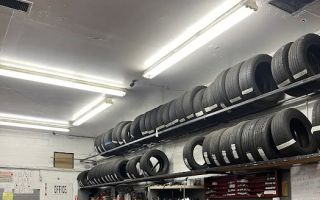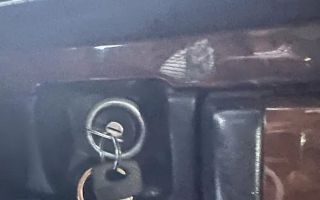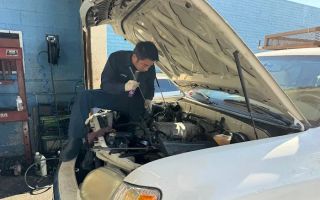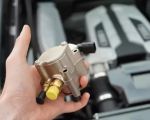- what-the-gasket-does - What the Canister Vent Valve Gasket Does
- why-it-matters - Why the Gasket Is Critical to Your Vehicle
- signs-of-trouble - Signs Your Canister Vent Valve Gasket May Be Failing
- real-world-examples - Real-World Stories About Gasket Issues
- diagnosing-the-problem - How to Diagnose Gasket Problems
- fixing-or-replacing - Repairing or Replacing the Canister Vent Valve Gasket
- prevention-tips - How to Prevent Future Gasket Failures
- when-to-get-help - When to Get Professionals Like Rescue & Towing Involved
1. What the Canister Vent Valve Gasket Does
1.1 A Small Component With a Big Role
The canister vent valve gasket may look like a simple rubber ring, but its function is surprisingly important. It seals the connection between the vent valve and the charcoal canister in your vehicle’s EVAP (Evaporative Emission Control) system. Without this seal, fumes escape, pressure fluctuates, and your vehicle’s emissions system loses efficiency.

Pick Your Part - Help Yourself
1232 Blinn Ave, Wilmington, CA 90744, USA
1.2 How It Supports the EVAP System
The EVAP system prevents fuel vapors from leaking into the atmosphere. The gasket ensures that the system remains airtight, allowing vapors to be routed and processed properly. A damaged gasket compromises this entire process.

Pick Your Part - Greer
13054 E Wade Hampton Blvd, Greer, SC 29651, USA
1.3 Why Proper Sealing Matters
Good sealing helps maintain the correct pressure in the EVAP system, keeps your fuel system operating as designed, and prevents unnecessary strain on other components.
2. Why the Gasket Is Critical to Your Vehicle
2.1 Protecting the Environment
Fuel vapors contain harmful chemicals. A faulty gasket allows them to escape directly into the air, contributing to pollution. Automakers designed the EVAP system to prevent exactly this.
2.2 Avoiding the Check Engine Light
One loose or cracked gasket can trigger the dreaded check engine light. EVAP-related error codes often confuse drivers because the symptoms may be minor—even while the system logs a fault.
2.3 Maintaining Fuel Efficiency
When fumes leak, your car often compensates by adjusting fuel trims. This can reduce mileage over time. An intact gasket keeps everything balanced.
2.4 Protecting Other Components
A failing gasket allows unfiltered air and contaminants into the EVAP system, which may damage sensors or valves over time.
3. Signs Your Canister Vent Valve Gasket May Be Failing
3.1 Strong Fuel Smell Around the Car
If you notice an unusual gasoline odor—especially near the rear of the vehicle—it could indicate a leak from the EVAP components, including the gasket.
3.2 A Persistent Check Engine Light
EVAP leaks commonly trigger OBD-II codes such as P0440, P0446, or P0455. Although those codes can have multiple causes, the gasket is often overlooked during inspections.
3.3 Difficulty Filling the Tank
A faulty gasket may cause pressure inconsistencies. This creates tank-filling issues such as the gas pump shutting off prematurely.
3.4 Rough Idle in Rare Cases
Severe leaks disrupt correct pressure balance, which can occasionally cause minor idle fluctuations.
4. Real-World Stories About Gasket Issues
4.1 A Driver Who Thought the Fuel Cap Was the Problem
One SUV owner spent weeks replacing fuel caps, thinking that was the cause of the recurring EVAP code. After multiple attempts, a technician found the real culprit: a hardened canister vent valve gasket that was barely sealing. A $10 part resolved weeks of frustration.
4.2 A Used Car Buyer’s Surprise
A buyer noticed a persistent gas smell in a recently purchased sedan. After inspection, they found the gasket had been improperly installed. Once replaced, the smell disappeared completely.
4.3 A Mechanic’s Most Common EVAP Leak Discovery
Some mechanics claim this gasket is among the top causes of “small leaks” misdiagnosed as expensive EVAP valve failures.
5. How to Diagnose Gasket Problems
5.1 Visual Inspection
Look for cracks, brittleness, gaps, or improper seating. Even a tiny tear can cause a leak.
5.2 Smoke Testing
Shops often use smoke machines to detect EVAP leaks. Smoke escaping from the valve connection usually indicates a gasket issue.
5.3 Checking Surrounding Components
Sometimes the valve or canister connection may be warped. Ensure the gasket is the right size and shape for your model.
5.4 OBD-II Analysis
Reading codes helps identify EVAP system faults. While not definitive, the codes can guide your inspection.
6. Repairing or Replacing the Canister Vent Valve Gasket
6.1 When Replacement Is Necessary
Most gaskets are inexpensive and easy to replace. If you see cracks, flattening, or tears, replacement is recommended.
6.2 Step-by-Step Overview
Access the canister vent valve, remove the old gasket, clean the mating surfaces, and install the new gasket evenly. Ensure everything fits snugly to restore a proper seal.
6.3 Avoid Using Random Sealants
Adding glues or aftermarket sealants may cause more harm than good. Always use a compatible gasket part.
6.4 When the Valve Also Needs Replacement
If the valve housing is damaged or warped, swapping the gasket alone may not help. Inspect both parts carefully.
7. How to Prevent Future Gasket Failures
7.1 Regular Inspections
Checking the gasket once or twice a year prevents small issues from becoming major problems.
7.2 Protecting the EVAP System
Avoid topping off your tank, as overflowing fuel can degrade gaskets more quickly.
7.3 Quality Part Selection
Choose durable materials that resist heat and fuel vapor exposure.
7.4 Keeping the Undercarriage Clean
Dirt buildup and road debris accelerate wear. Occasional undercarriage cleaning helps preserve seals.
8. When to Get Professionals Like Rescue & Towing Involved
8.1 If the Car Becomes Hard to Drive
Severe EVAP issues rarely affect driving safety, but if the vehicle struggles to start or idle, calling Rescue & Towing ensures you avoid roadside trouble.
8.2 When You Need Professional Diagnosis
Some gasket leaks are subtle. Professionals use advanced diagnostic equipment to pinpoint the issue accurately.
8.3 For Safe Transport to a Repair Shop
If you smell strong fuel vapors, it’s best not to drive. Rescue & Towing can safely transport your vehicle to a trusted mechanic.




























